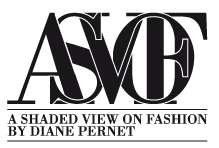Dear Shaded Viewers and Diane,
Along with Pablo Juncadella and Tilman Sole, Marc Catala Rodas is creative director at Mucho visual communications and digital design studio, and the very talented soul behind ASVOFF Barcelona wonderfully enticing graphics. While getting ready for Mucho's opening in Berlin, Marc gently spared a moment to share with us his thoughtful views on the boundless wonders of visual literature, typography and graphic languages.
S.B.: Graphic communications, digital design, typography and lettering are all often perceived like that fresh, ultimate form of figurative art, the only one that manages to successfully apply to the frenetic rhythms of modern life in an elegant, classy cursive way. Sometimes though, they are rather valued as clever, inspiring means to better grasp reality, ways to describe the overflow of stimuli and images in our world from the inside, to simplify matters in bold, outlined tiny symbols, like sugar cubes to relish one at a time. What are your thoughts on graphics and visuals, and why did you first approach this fascinating, somehow limitless field?
M.C.: Graphic design as I understand it is a form of commercial art. Many will readily disagree, but after some years of practice I have come to this conclusion. Using the forbidden word 'art' might seem pretentious of me. On the contrary, I am well aware of the commercial side of visual communication and applied graphic creativity, and believe it grounds it and gives sense to our imagination. Balwant Ahira, an amazing art director (Nova, The Observer Magazine, Arena Magazine), and good friend of ours, once came up with this definition while discussing some design sketches together, and I immediately thought he was absolutely right.
Graphic design uses and creates graphical languages to communicate messages, and has to perform in difficult environments and deliver those messages in effective and engaging ways. In doing so it often comes up with visual solutions which are both communicative and aesthetic, both commercial and artistic.
S.B.: Since the establishment of Mucho in 2003 you've been working with several diverse and renowned names, spanning from book designs and city guides to packaging, wine shop labels and restaurants menus, always aiming to provide your clients with a unique, precious and perfectly fitted corporate identity. Is there a signature, a personal touch that we could find in all of your works or are they completely based upon your clients' needs and personalities? How do you balance your creativity with their vision?
M.C.: Our take on Mucho (that of my partners and me) has always been to serve the clients' needs. Over the years the perception that what we do has as much to do with providing a good service as it does with coming up with great visual ideas hasn't ceased to increase. Also we have always imagined our work as non-formulaic, and we consciously aspire to produce a new piece of work for each project, without repeating ourselves. I respect designers who are happy to create a style and can dwell on it gracefully, but neither Pablo Juncadella, nor Tilman Sole (partners at Mucho) or me are of that kind. We need to constantly explore, experiment and question our work to be able to move forward, and that forces a steady renewal of the visual languages we produce. Obviously, the hectic studio pace, and the fact that we all have our little obsessions and tics means that a certain 'way of doing things' can be perceived in the different projects. But I find those hidden manners a good thing that ties up all of Mucho's work.
S.B.: Your work for ASVOFF Barcelona is an enchanting mix of wit and sweetness, peachy shades and deep plum lipstick, confidence and expectation, and it flawlessly conveys the festival's shaded mood and sensibility with a somehow exotic, definitely Spanish feel. How did you collaboration with the ASVOFF team begin, and where did the poster idea come from?
M.C.: Well, it is important to credit Alex Murray-Leslie

